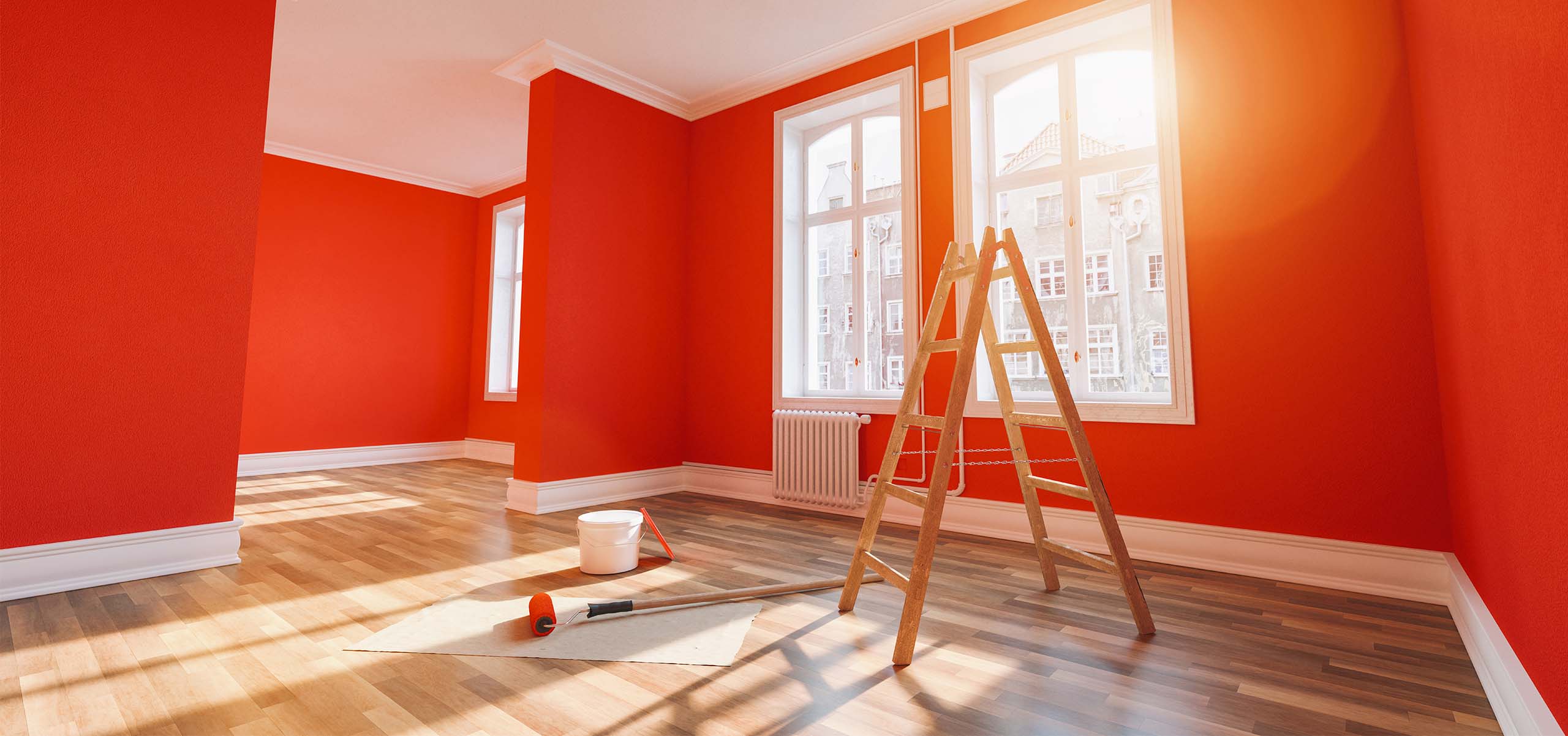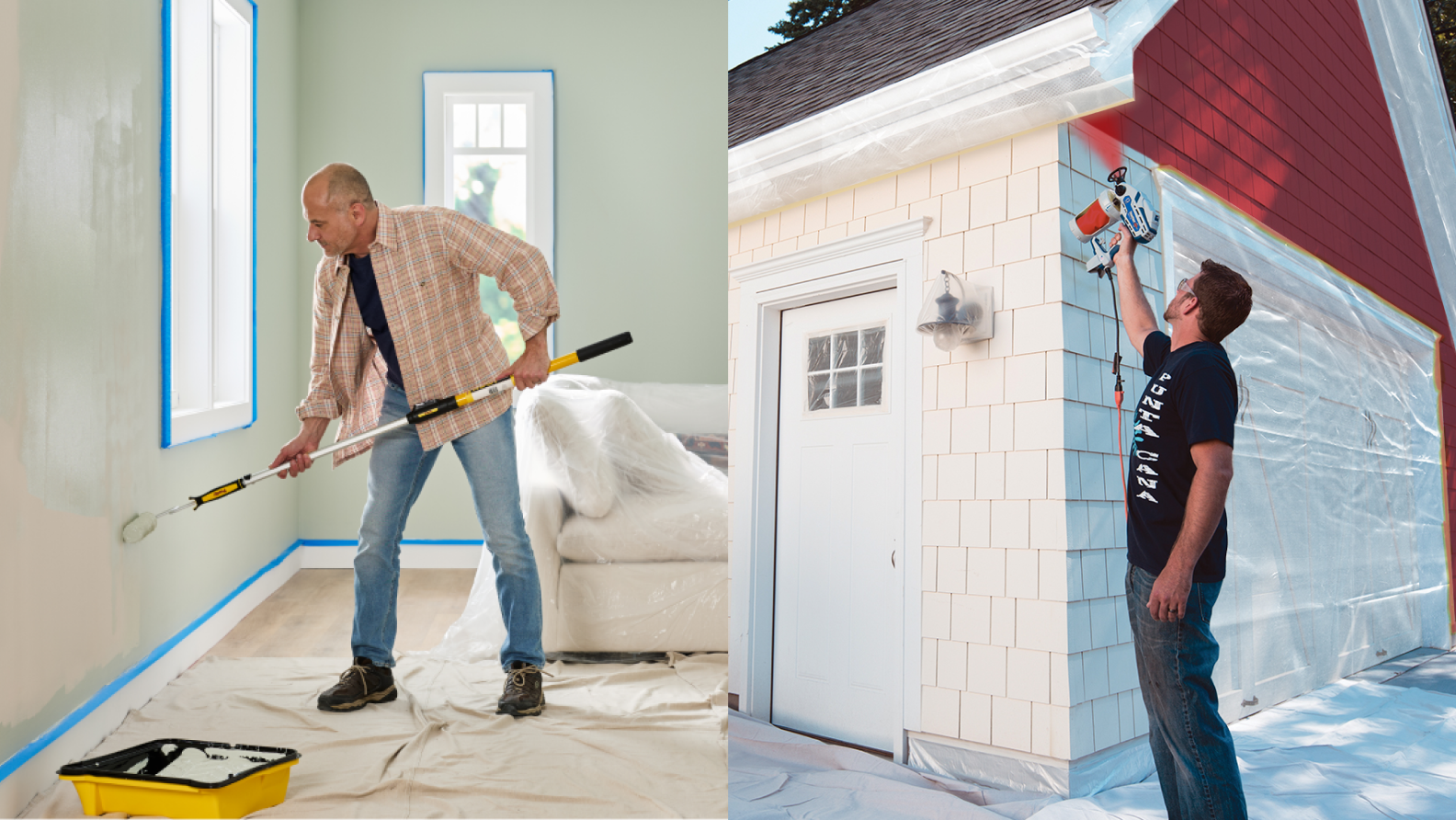
Painting a home might seem like a single, unified task, but there’s a significant distinction between interior and exterior painting services. From the materials used to the preparation methods, each project demands different tools, strategies, and considerations. Understanding the contrast can help homeowners make better decisions, avoid costly errors, and ensure lasting results.
This article covers what sets interior and exterior painting services apart. It explains the different expectations for surfaces, preparation, materials, environmental impact, and durability. Whether you’re considering repainting a bedroom or giving your house a fresh coat of exterior color, you’ll learn what to expect from each service and how to prepare.
1. Surface Preparation Methods Vary Greatly
Surface preparation directly influences the quality of a paint job. The techniques used indoors are not the same as those used outside.
Interior Surfaces Require Smoothing and Cleaning
Indoor walls are typically made from drywall, plaster, or wood paneling. These materials need gentle surface cleaning and patching.
- Walls are usually cleaned with mild soap to remove dust and oils
- Holes and cracks are patched with spackle or joint compound
- Sanding is required to create a smooth surface
- Primer may be used to ensure paint adhesion or stain blocking
Humidity and indoor lighting affect how the finished paint looks, which is why smoothing and clean priming are essential indoors.
Exterior Surfaces Demand Heavy-Duty Preparation
Outdoor surfaces deal with much harsher elements. Wood siding, stucco, brick, or vinyl often require deeper cleaning and inspection.
- Power washing removes mildew, dirt, and flaking paint
- Scraping and sanding help remove loose or damaged coatings
- Caulking seals gaps and prevents water intrusion
- Specialized primers protect against UV exposure and moisture
Since outdoor conditions constantly wear down surfaces, preparation for exterior painting is more labor-intensive and time-consuming.
2. Paint Formulas and Materials Are Built Differently

One of the biggest differences lies in the composition of interior vs. exterior paints. Each is developed for a unique set of challenges.
Interior Paints Focus on Appearance and Safety
Indoor paint is designed for aesthetic finish, low odor, and safety.
- Typically uses latex or acrylic formulas
- Emissions are lower (Low-VOC or No-VOC)
- Prioritizes easy cleaning and resistance to scuffs
- Available in matte, satin, eggshell, and gloss finishes
Because it’s applied in enclosed spaces, interior paint has strict health regulations and offers better finish control.
Exterior Paints Prioritize Durability and Weather Resistance
Exterior paints are engineered to withstand harsh environmental conditions.
- Contains additives for mildew resistance and UV protection
- Higher resin content increases durability and color retention
- Weatherproof and fade-resistant over time
- Designed to expand and contract with temperature changes
Exterior paints must hold up against wind, rain, sun, and freezing temperatures, making formulation more rugged.
3. Application Tools and Techniques Change With the Setting
Painting tools and methods vary based on the environment and surface condition.
Indoor Application Emphasizes Precision and Clean Lines
For indoor spaces, painters use more precise tools:
- Brushes and rollers are common for edges and walls
- Tape is used to protect trims, ceilings, and moldings
- Drop cloths and ventilated areas are required for cleanliness
Professional indoor painters often focus on minimal mess and detailed finishes.
Outdoor Painting Requires Access Equipment and Speed
Exterior painting projects usually involve:
- Ladders, scaffolding, or lifts for multi-story access
- Larger rollers or sprayers to cover broad surfaces faster
- Fast-drying paint during optimal weather conditions
Because of wind and temperature, exterior jobs are often scheduled during temperate seasons for best results.
4. Weather Conditions Play a Crucial Role in Exterior Painting
Indoor jobs happen year-round, but outdoor work depends heavily on climate.
Interior Work Has More Flexibility
Interior projects aren’t influenced by weather. With proper ventilation and protection for furniture or flooring, painters can work regardless of outside temperature or humidity.
Exterior Work Must Follow Climate Guidelines
Exterior jobs must factor in:
- Rain or moisture that can ruin paint adhesion
- Temperature extremes that prevent curing
- Wind that can affect sprayers or dust surfaces
Professional painters usually monitor weather forecasts to schedule projects during dry, mild conditions for optimal adhesion.
5. Cost, Timeline, and Maintenance Expectations

Interior and exterior painting services vary in scope and pricing due to different needs and materials.
| Feature | Interior Painting | Exterior Painting |
|---|---|---|
| Average Duration | 2–5 days | 5–10 days |
| Prep Intensity | Moderate | Extensive |
| Material Cost | Lower | Higher (due to specialized paint) |
| Maintenance Frequency | 5–10 years | 5–7 years |
| Equipment Needs | Basic (brushes, rollers) | Advanced (scaffolds, sprayers) |
Exterior painting often comes with higher costs, but both services vary depending on house size, prep, and detail work.
Common Questions
What happens if you use exterior paint indoors?
Exterior paint contains strong resins and mildewides not intended for indoor environments. It can off-gas harmful fumes and may not adhere well to indoor surfaces. Use paint made specifically for interior conditions.
How long should exterior paint last before needing repainting?
Most exterior paint jobs last between 5–7 years, depending on climate, surface material, and quality of the application. Coastal or high-sun areas may reduce this lifespan.
Is the prep work really that different?
Yes. Indoor prep focuses on surface smoothing and detail, while outdoor prep must tackle peeling paint, weather damage, and mildew. Exterior prep is more extensive and labor-intensive.
Do indoor and outdoor colors fade at the same rate?
No. Exterior paints are formulated to resist UV damage and fading, but they still fade faster than interior paints due to constant sun exposure. Indoor paints typically retain color longer in stable lighting conditions.
Conclusion
Interior and exterior painting services may seem similar at first glance, but the demands, materials, and processes behind them are quite distinct. Interior painting emphasizes appearance, safety, and precise finish, while exterior work focuses on durability and protection from environmental stressors.
Knowing what to expect from each type of service can help you plan effectively and communicate with painting professionals. Whether you’re working on interior rooms or exterior facades, understanding these differences helps ensure long-lasting results with fewer surprises.
FAQs
Can I use the same paint for both interior and exterior projects? No. Paints are formulated for specific conditions. Using exterior paint indoors can lead to safety concerns, and interior paint won’t hold up outside.
Do professional painters need different certifications for indoor and outdoor jobs? While general painting skills overlap, experienced professionals often specialize. Some states require additional safety certifications for working at heights or with scaffolding outdoors.
How do I choose between satin and gloss finishes for interior walls? Satin offers a soft sheen and is easy to clean, making it good for living rooms and hallways. Gloss is more reflective and suited for trim or bathrooms due to moisture resistance.
Is exterior paint always more expensive than interior paint? Typically yes, because it includes additives for UV protection, mildew resistance, and temperature flexibility. The labor involved in exterior work also raises the total cost.
Do I need to be home during interior painting? Not always, but it’s helpful for walkthroughs before and after the project. Some homeowners choose to stay away due to fumes or to avoid disruptions during multi-day jobs.
Reviewer: Chloe Martinez brings 8 years of experience in home improvement. Feedback from Chloe helped shape this post to better support companies working to strengthen their reputation and expand their reach.